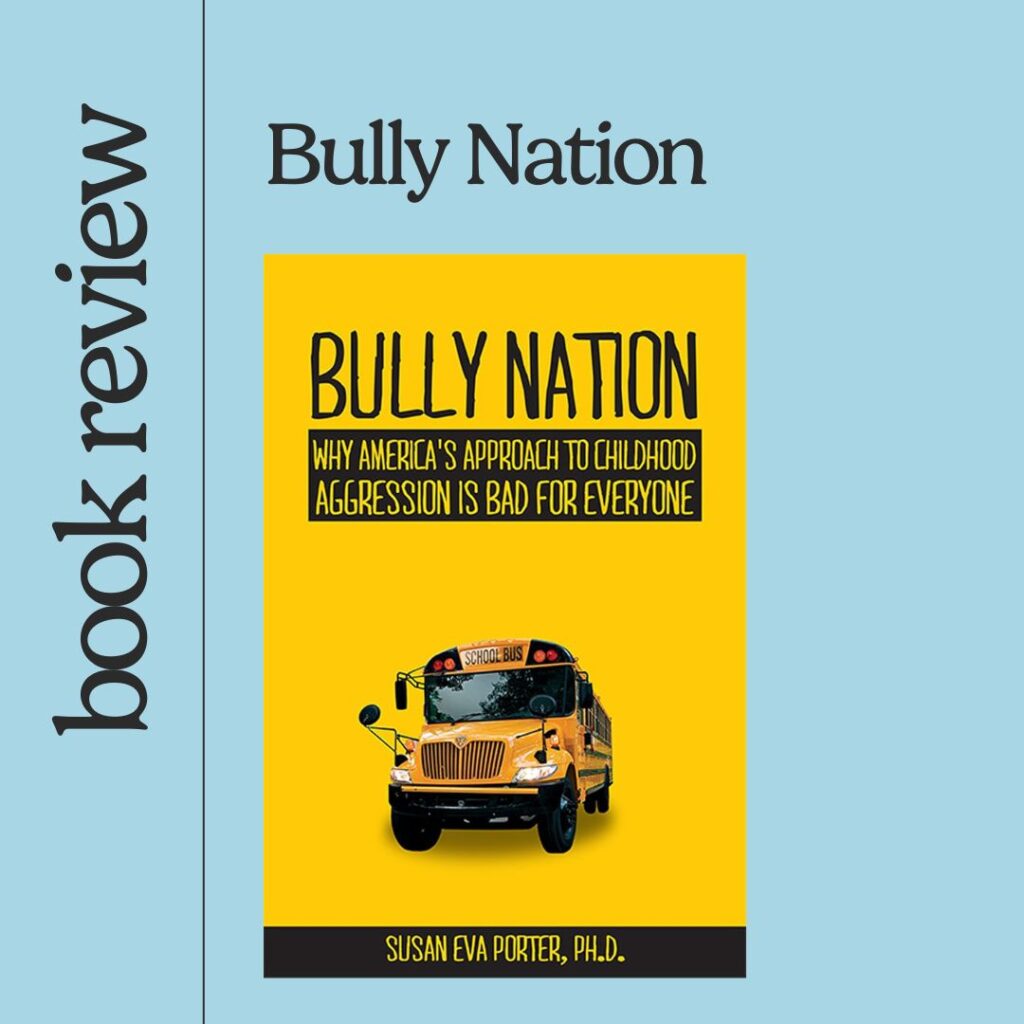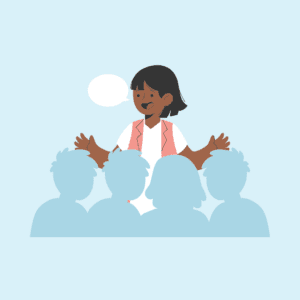The B-Word
by Laurie P. Mendoza, MA, CAGS
I’d like to recommend a book that has changed the way I look at the issue of bullying and aggression at my school. Turn on the news, listen to discussions among parents and school staff, or think of how often kids say to you, “He’s bullying me!” It seems that we’re in the middle of a bullying epidemic, doesn’t it?
It may seem that way, but we’re not.

In her book Bully Nation, Susan Eva Porter totally dismantles the widely-accepted notion that kids are under siege from bullies 24/7. While she provides a number of good reasons why we have that impression, one is so obvious that I can’t believe it never occurred to me: the definition of bullying has expanded hugely in the last ten years or so.
Bullying used to be defined as some form of coercion—forcing someone, usually smaller, to do something they didn’t want to do—often via physical force. It was pretty clear, and most people could agree if something constituted bullying or not. But in the last decade behaviors that used to be considered just plain mean or even routine kid stuff are now being called bullying.
What was fairly black-and-white is now much grayer. Many of the newly classified “bullying behaviors” are subtle and subject to interpretation. The “subject to interpretation” part is important to note because as the definition of bullying has expanded and become more amorphous, anti-bully language, school policies, and state laws have moved in the opposite direction, growing more rigid and unequivocal.
In almost any situation at school where there is a conflict between children, anti-bullying procedures kick in (in some states, by law). These policies force us to spend huge amounts of time and energy investigating every incident, require us to place black-and-white labels on children, and take away our ability to use our professional judgment in dealing with individual situations.
Bully language is overly simplistic and emotionally laden. Its labels—bully, victim, bystander—place children in predetermined roles that are each harmful in their own way. Once the roles have been assigned it is nearly impossible for adults to look at all sides of the story, to have compassion for the child who is labeled as the bully, or to focus on solutions instead of punishment.
Bully language also makes it almost impossible for children to feel hopeful or empowered. The anti-bullying programs and procedures we’re being required to implement give kids a whole lot of messages we shouldn’t be comfortable with.
For “victims”
- Anything anyone does that causes me any type of emotional discomfort or pain is bullying, and it can damage me for life
- I have no control over how I feel; I am completely at the mercy of others and how they treat me
- I am incapable of solving my own problems
- If I’m a “victim,” I don’t have to examine or take responsibility for my own actions
For “bullies”
- If I hurt someone’s feelings—even if that wasn’t my intention—then I am a bully
- I can never make a social mistake
- Relationships can’t be fixed once there’s a problem
- Being a “bully” means I’m a bad kid and I can never change
And even for “bystanders”
- It is my responsibility to stand up for others even if I don’t understand what’s going on
- If I don’t intervene, then I am just as guilty as the bully
The problem with these messages is obvious: they are the opposite of the messages we try to impart to our students every day—that they are worthwhile individuals who are in the process of learning how to be caring, capable, and resilient problem-solvers.
Porter reminds us repeatedly that we are talking about children. During their school careers, kids have to learn many complex social-emotional skills: how to manage their feelings, control their impulses, read social cues, develop empathy, and tolerate frustration, to name a few.
Expecting children to do these things—perfectly, at all times, and regardless of whether or not they are developmentally able to (as Zero Tolerance policies dictate)—is setting them up to fail in a spectacular fashion.
I believe most kids’ difficulties are the result of skill-based deficits or developmental delays, so I try to look at each situation from the child’s perspective while considering history and context. Once we label a child a bully and believe he or she is deliberately setting out to harm peers, we lose both our compassion for that child and our ability to help. Once a child is labeled a bully, people stop thinking about how to teach skills and turn to thinking of how to punish. In my experience, I can often be seen as an apologist for the kid’s bad behavior if I even attempt to reframe the conversation.
School counselors—of all people—need to be able to recognize the complexities of children’s interactions, identify the lagging skills (of all parties!) that create problems, and help come up with positive solutions that will teach those skills. And we need to do it with compassion. I highly recommend this book.
A longer version of this post originally on Laurie’s website, School Counseling Files. To read the original, go to http://www.schoolcounselingfiles.com/blog/the-b-word.







